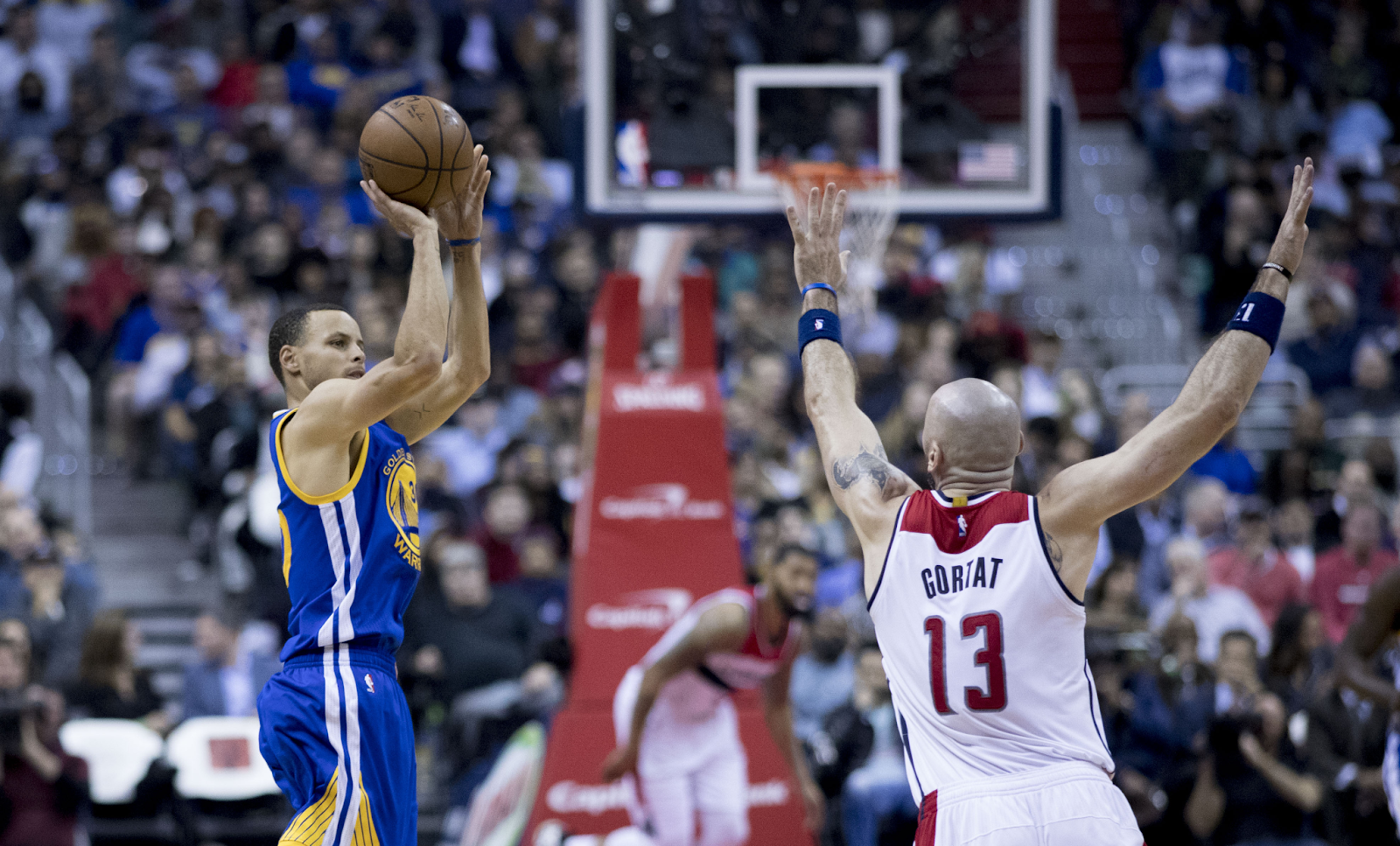Steph Curry’s Guide To Being A Team Player: Lessons In Leadership And Collaboration
Steph Curry is widely regarded as one of the greatest basketball players of all time. His skills on the court are undeniable, but what sets him apart from other players is his ability to lead and collaborate with his teammates.
Curry’s approach to teamwork and leadership has been studied by coaches and business leaders alike, and his insights have been applied in a variety of settings beyond the basketball court.
In this article, we will explore Curry’s guide to being a team player, focusing on the lessons he has learned about leadership and collaboration. We will examine his communication strategies, his approach to building teamwork, and his methods for overcoming obstacles.
About Stephen Curry
Stephen Curry, born on March 14, 1988, is an American professional basketball player known for his exceptional three-point shooting ability and captivating style of play. He revolutionized the game with his unique shooting technique and has become widely regarded as one of the greatest shooters in the history of basketball.
Curry played college basketball at Davidson College, where he gained attention for his impressive skills. In 2009, he was drafted by the Golden State Warriors as the seventh overall pick. Despite facing early-career injuries, Curry persevered and emerged as one of the NBA’s brightest stars.
With his sharpshooting skills, Curry led the Warriors to unprecedented success. He played a vital role in their transformation into a dominant team, winning three NBA championships in 2015, 2017, and 2018. Curry’s breakout season came in 2012-2013 when he set the NBA record for most three-pointers made in a single season.
Beyond his on-court achievements, Curry is known for his philanthropy and positive influence. He has been involved in charitable initiatives, including those focused on combating malaria and supporting education.
Stephen Curry’s impact extends beyond statistics and records. His style of play and shooting prowess have inspired a new generation of players and influenced the way basketball is played today. Curry’s name will undoubtedly be remembered among the greatest basketball players of all time.
Communication Strategies
One of the key takeaways is the importance of active listening. This involves giving your full attention to the speaker, using nonverbal cues to show your interest, and summarizing or paraphrasing what you have heard to ensure understanding. By actively listening, team members can avoid misunderstandings and foster a more collaborative environment.
Nonverbal communication plays a crucial role in team communication. Facial expressions, tone of voice, and body language can all convey meaning and emotions, and it is important for team members to be aware of these cues in order to better understand one another.
Effective communication is a fundamental aspect of building teamwork, as it helps to establish trust and establish common goals. By actively listening and being aware of nonverbal communication, team members can better understand one another’s perspectives and work together more effectively.

Building Teamwork
Developing a strong sense of teamwork is essential for achieving success in any group endeavor. Collaborative problem solving is a key component of building teamwork, as it allows team members to work together to identify and solve problems.
This approach involves active listening, open communication, and a willingness to consider different perspectives. By fostering a culture of trust, team members can feel comfortable sharing their ideas and opinions, which can lead to more effective problem solving and decision making.
In addition to collaborative problem solving, building teamwork also requires a focus on respecting each other’s contributions. This means recognizing the unique skills and perspectives that each team member brings to the table, and valuing their input accordingly.
By working towards a common goal, team members can leverage their individual strengths to achieve success as a group. Ultimately, building teamwork is an ongoing process that requires a commitment to communication, collaboration, and mutual respect.
To overcome obstacles in the pursuit of teamwork, it is important to remain focused on the common goal and to maintain open lines of communication.
Overcoming Obstacles
To overcome obstacles, team members must adopt a perseverance mindset that focuses on staying positive and supportive. This mindset allows individuals to remain motivated in the face of adversity.
Teams also need to communicate openly and work together to find creative problem-solving strategies that help them tackle challenges efficiently. By adopting a collaborative approach, team members can leverage each other’s strengths to overcome obstacles and achieve their goals.
Furthermore, creative problem solving requires leaders to use their analytical skills to identify the root cause of the problem. Once the problem is identified, team members can use their collective intelligence to develop solutions that address the issue.
Leaders can also inspire their team members to think outside of the box and come up with innovative solutions. By leading by example, team leaders can show their team members how to navigate obstacles and achieve success.
Successful leaders inspire their team members to adopt a perseverance mindset and work collaboratively to overcome obstacles.

Leading by Example
As a team player, Steph Curry exemplifies this type of leadership through his actions on and off the court. His unwavering dedication to his craft and his team has inspired countless athletes to strive for excellence.
He works tirelessly to perfect his skills, and his teammates see firsthand the effort he puts in, which encourages growth and fosters trust. Curry’s positive attitude and unwavering belief in his team’s abilities have contributed to their success, both on and off the court.
By leading by example, Curry has shown that one person’s actions can have a significant impact on the entire team.
Leaders who lead by example inspire their teams to achieve greatness. Curry’s leadership style shows that it is not enough to simply tell others what to do.
He shows his team what to do by modeling the behavior he expects from them. His commitment to his team and his sport has earned him the respect and admiration of his teammates and fans alike.
As the team’s star player, his leadership goes beyond his performance on the court. He is committed to fostering mentor relationships with his teammates and helping them develop their skills.
Developing Mentor Relationships
Finding mentors and cultivating relationships requires a level of vulnerability and trust, as it involves opening oneself up to guidance and constructive feedback.
However, navigating power dynamics within the mentor-mentee relationship can be challenging, as it requires a delicate balance between deference and assertiveness.
To effectively navigate power dynamics within mentor relationships, it is important to establish clear boundaries and expectations from the outset. This can involve setting goals for the mentorship, outlining the specific areas where guidance is needed, and communicating any concerns or questions that arise throughout the process.
Additionally, it is important to prioritize open and honest communication, as this can help to build trust and establish a foundation for a strong mentor-mentee relationship.
Finally, it is important to remember that mentorship is a two-way street, and that both parties can benefit from the relationship.
Balancing Personal and Professional Life
Achieving a balance between personal and professional responsibilities is a crucial aspect of overall well-being and productivity, and requires careful consideration and prioritization.
In order to achieve this balance, it is important to set boundaries and prioritize tasks. This involves being aware of one’s own limitations and being able to say no when necessary.
It also involves being intentional about how time is spent, both in terms of work and personal life. For example, setting aside specific times for work and for leisure activities can help create a sense of structure and prevent burnout.
To illustrate the importance of balancing personal and professional responsibilities, consider the following table:
Personal Tasks | Professional Tasks |
Exercise | Meeting with clients |
Spending time with family and friends | Attending team meetings |
Pursuing hobbies | Completing projects |
Relaxation and self-care | Responding to emails |
The table shows that both personal and professional tasks are important and require attention. However, in order to achieve balance, it is important to prioritize tasks and make sure that time and energy are allocated appropriately.

Applying Lessons Beyond the Court
The lessons learned from Steph Curry’s guide to being a team player extend beyond the basketball court and can be applied to other areas of life, including business and community involvement.
Transferring Skills to Business
As businesses continue to evolve and adopt more collaborative and team-oriented approaches, individuals who have honed their skills in sports can leverage their experience to become effective leaders and team players in the workplace.
Business applications of skills such as teamwork, strategic thinking, and communication are transferable across various domains and can be applied to achieve success in different industries.
One of the most significant benefits of transferring skills from sports to the business world is the ability to develop a collaborative mindset. In sports, individual success is often dependent on the success of the team as a whole.
Similarly, in the business world, success is often achieved through collaboration and teamwork. By applying the principles of teamwork and strategic thinking learned in sports, individuals can become effective leaders and team players in the workplace. This can lead to increased productivity, better decision-making, and a more positive work environment.
The transferability of skills from sports to the business world is a reminder that success is not limited to a single domain but can be achieved through collaboration and strategic thinking.
The ability to transfer skills from sports to the business world is just one way individuals can give back to their community. By applying lessons learned in sports to the workplace, individuals can contribute to the success of their team and the organization as a whole.
Giving Back to the Community
Contributing to the betterment of the community through partnering with charities and supporting community outreach programs is an important aspect of being a team player.
Giving back to the community not only benefits those in need but also fosters a sense of purpose and pride in individuals. By volunteering time and resources, individuals can make a positive impact on their community and inspire others to do the same.
To evoke emotion in the audience, here are four reasons why giving back to the community is essential:
- It allows individuals to connect with others who share their values and passions.
- It provides a sense of fulfillment and purpose, which can lead to improved mental health and well-being.
- It helps build stronger and more resilient communities by addressing social issues and providing necessary resources.
- It sets an example for future generations, encouraging them to prioritize community service and giving back.
Contributing to the community is just one aspect of being a positive influence. Another critical component is leading by example and inspiring others to do the same.
Being a Positive Influence
Promoting positive change through exemplary conduct and inspiring others to follow suit is an essential characteristic of individuals who strive to be a positive influence.
As a team player, Steph Curry has shown that he is not only a skilled athlete but also a leader who fosters camaraderie among his teammates. He has consistently exhibited positive behavior on and off the court, which has earned him the respect and admiration of his peers and fans.
Leading by encouragement is one of the ways Curry promotes a positive environment within his team. He is known for his enthusiastic and supportive attitude towards his teammates, which motivates them to perform better.
Curry understands that encouraging his teammates is essential in building their confidence and trust in one another. Fostering camaraderie is another aspect of Curry’s leadership style.
He makes sure that his teammates feel valued and appreciated by acknowledging their contributions and strengths. This creates a sense of belongingness and unity within the team, which is crucial in achieving their common goal of winning.
Curry’s positive influence has not only impacted his team but also the broader community, as he serves as a role model for aspiring athletes and people in general.
Leading by Encouragement | Fostering Camaraderie |
Steph Curry motivates his teammates by providing them with positive reinforcement. | Curry acknowledges the strengths and contributions of his teammates, creating a sense of belongingness within the team. |
Curry understands that encouragement is crucial in building the confidence and trust of his teammates. | Fostering camaraderie creates a positive environment that is essential in achieving a common goal. |
Final Words
Steph Curry’s success as a team player and is rooted in his leadership, communication, and collaboration skills. He understands the importance of building teamwork, overcoming obstacles, and leading by example. Curry also recognizes the value of mentor relationships, and balancing personal and professional life.
Consistently demonstrating leadership and teamwork skills can inspire others to do the same, creating a positive cycle of success.
Overall, Steph Curry’s guide to being a team player is a valuable resource for anyone looking to improve their leadership and collaboration skills.




